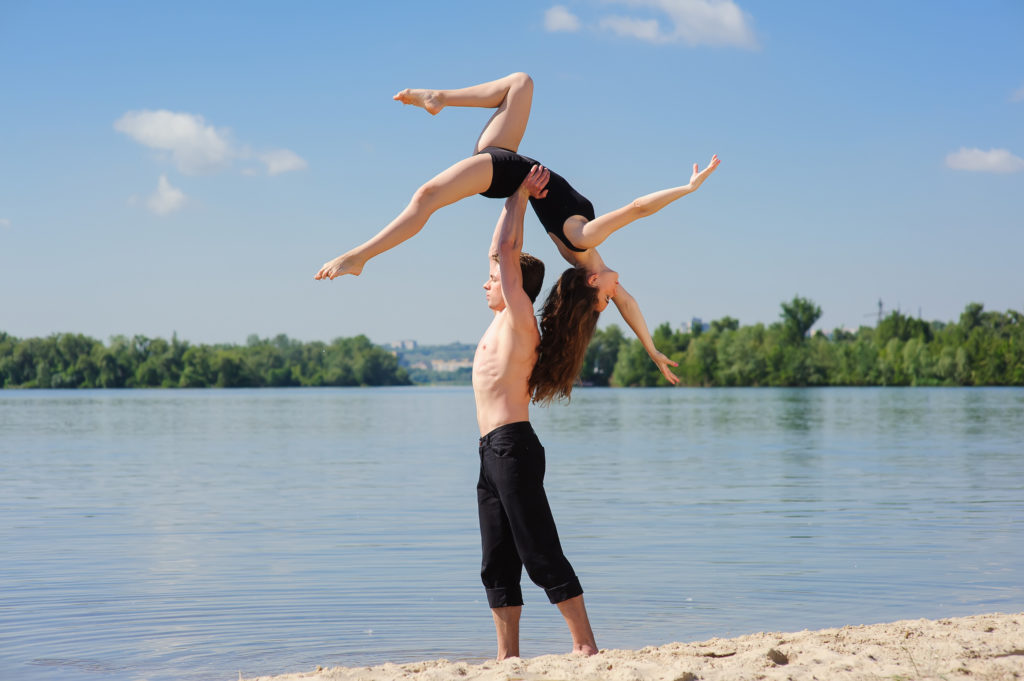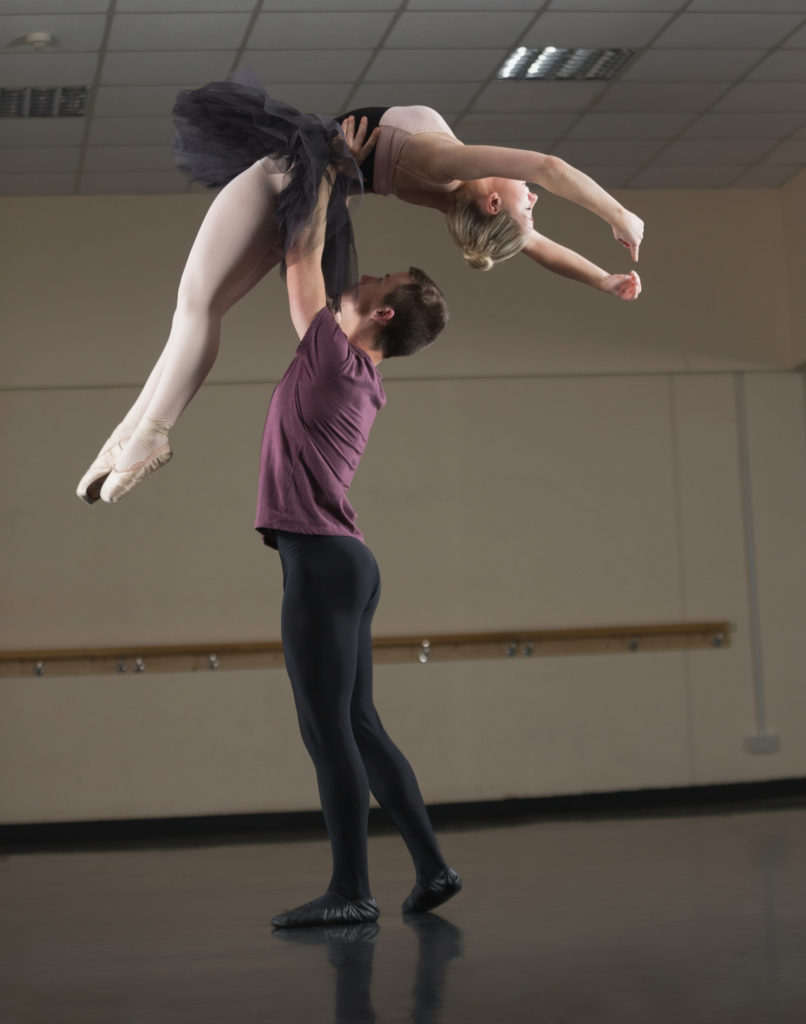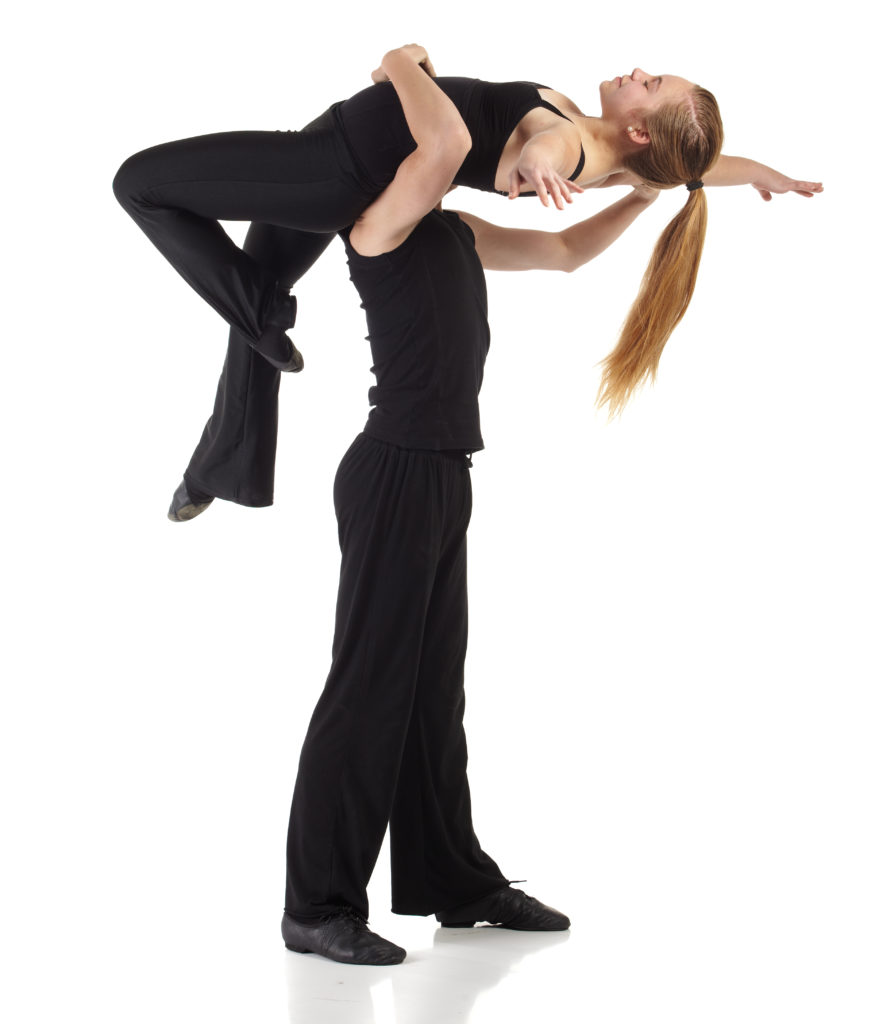So You Want To Be A Theater Arts Dancer: What It Takes
So You Want To Be A Theater Arts Dancer: What It Takes
Disclaimer: I am not a professional Theater Arts Dance competitor…yet; however, I have been working on this style for a few years, now, in a Pro-Am partnership, so I wanted to share a few things that I have learned or come to believe from my experience thus far.
“Well, I could do that too. It’s only a matter of losing a few pounds.” – overheard after a Theater Arts performance.
Just like Joan Plowright’s character in Dance with Me, I’m sure we’ve all thought, “I wanna do that too!” after watching a beautiful pas de deux or a Theater Arts/Cabaret routine. Perhaps we’ve even thought we could do it too, if we just lost a few pounds. However, while it helps to be slim, being a Theater Arts Dancer entails so much more, and it may not be feasible for everyone. To that end I want to address some things to bear in mind, if you are aspiring to do Theater Arts.
Appropriate Training
While some low lifts may be seen in Student Showcases or the Showdance category of Ballroom Dancing, most Ballroom Dancers are not trained in true Theater Arts. In fact, we at GQ Ballroom have observed a professional Latin couple trying to do a lift, where the lady could have choked her partner, or worse, because her arm was placed around his neck, causing it to take the entire wait of her body. Instead, her arm should have been around his shoulders, with her wrist under his armpit, which would have allowed his shoulders to take the wait of her body, making it easier for him to lift her.
We have also been aware of instances where students, who wanted to do lifts, went to instructors who had no background and were attempting to copy lifts from video of other people’s routines. The result, again, was improper technique, which could have been disastrous.
So what is the best training to have for Theater Arts?
While there are some gentlemen who lift their partners through sheer strength, really the best way is through proper technique, on both the part of the gentleman and the lady. That is how my partner, our own GQ, whose professional partner is about his same height, is able to lift her over his head, when even bodybuilders at the gym cannot. GQ has a background in classical forms of dance, including ballet, modern, and jazz, where he learned to partner at a high level from a fairly young age. Gentlemen with that type of background, or similar training, make for the best Theater Arts Dance partners, in my opinion, because they know how to enter and exit lifts safely, where to hold the lady, and how the lady should hold herself. That does not necessarily mean that a gentleman who doesn’t have a classical background cannot do Theater Arts; however, if he does not, he should be humble enough to seek instruction from someone who is properly trained. YouTube videos can be a great tool, but they are no substitute for learning how to execute a desired lift from a qualified coach. Moreover, you shouldn’t be putting a lady’s health in jeopardy, because you are practicing without the proper training.
For women, it is beneficial to be classically trained as well, or perhaps to have something like some gymnastics training, along with your Ballroom Dancing. However, it is more critical that you find a gentleman who is properly trained or at least amenable to coaching. If your partner tries to do lifts without training, don’t let him. As First Lady, Nancy Reagan would have said, “Just say, ‘No!’”
Strength and Flexibility
While both of these are important in Theater Arts, there are some things to bear in mind:
- Strength training, done right, may increase flexibility. However, done incorrectly…well, at some point, we’ve likely all seen (or become acquainted with the stereotype of) a body-builder who was so musclebound that his mobility was restricted. For gentlemen, body-building to the point of shortening your muscles could prevent you from being able to fully extend your arms when pressing your partner over your head. For both ladies and gentlemen, it could inhibit your ability to get the extensions and lines that you want, both on the floor and, for ladies, in the air. To make sure that you are maintaining (and even improving) flexibility while doing your strength training, you should make sure that you work with a qualified personal trainer, and it’s a bonus if you find a trainer who has experience working with dancers.
- As we already noted, flexibility allows a gentleman to fully extend when pressing his partner above his head, and it allows the lady to create beautiful lines with her arabesques and attitudes and cambrés. There is such a thing as too much flexibility, however, especially for us ladies. You may wonder how that is possible, but imagine trying to carry a loose sack of grain draped across your arms, with gravity causing it to droop and the grain to sift unevenly, to one side or the other. Now imagine carrying a board of the same weight. Clearly the board will be easier to carry, because it maintains its shape and weight distribution.The same principle applies to Theater Arts. In a lift, the lady needs to be flexible, but she needs to have the strength to maintain a shape so that her partner has some place where he can hold her…a platform if you will. So, for instance, while it may look good on the floor to have a sky-high arabesque, if the lady allows her leg to go too high in a lift, her partner could lose the surface he needs to support her in the air, which is potentially dangerous. In allowing her leg to go too high, she essentially becomes like our sack of grain, when she should be more like the board.
So, in which areas is it important to develop strength?
To be honest, Theater Arts requires one to be strong in general; however, there are some areas that are perhaps more essential than others:
- Core Strength. Having a strong core is critical to doing theater arts. For ladies, it is what will allow you to become that “board”, so that you can hold your shape instead of collapsing and changing your weight distribution. This not only ensures that your partner has the platform that he needs to hold you in a lift, but it also makes it safer, in that your partner won’t have to compensate for unexpected shifting on your part. For gentlemen, core strength will give you the stability that you need to help prevent injury and to keep your partner safe in lifts that do require movement, and while you are getting synched as partners.
- Leg Strength. We’ve all heard that lifting comes from the legs. The same applies in Theater Arts as well. This is why you may see a gentleman demi-plié before taking his partner into a high lift. He is getting leverage and push from his legs in order to lift her. At the same time, however, the lady shouldn’t approach a high, stand-up lift like a dead weight, with no preparation…she may need to demi-plié as well. Moreover, for stand-up lifts especially, the lady needs leg strength in order to be able to stand up, and then a combination of leg and core strength to maintain her balance and shape. I used to do a fair amount of rock-climbing, both indoor and outdoor, and I learned that you actually wear yourself out faster, both mentally and physically, if you don’t keep moving and just trust your leg and stand all the way up. So be sure to include some leg-strengthening exercises in your training, so that you aren’t afraid to stand, when the time comes. This will help you to achieve a correct and stable position in a lift, and it helps your partner, so that he doesn’t have to rely entirely on his power-lifting abilities because you break form.
- Arm Strength. Arm strength is probably the least critical of these. For gentlemen, you need to have strong arms, but, again, they shouldn’t be so musclebound that you can’t extend them all the way. For ladies, obviously, you don’t want huge batwings, but you should at least strengthen them enough to have a nice, toned look, again, while not being overly musclebound. If you and your partner want to include some Acroyoga in your Theater Arts routine, you may want to work on your arms a little more; however, that is something to take up with your Acroyoga instructor.Ultimately, Paul Vasterling, Artistic Director of the Nashville Ballet, said it best in a 2011 interview with Pointe Magazine, “The fact is, women have to be able to be lifted by their partners,” i.e. be strong enough to be the board, “and men have to be strong enough to lift the women.”
Note: Before embarking on any sort of flexibility and fitness regimen, you should talk with your doctor or healthcare provider and then work with a qualified coach.
Body Type – for female Theater Arts Dancers
In Classical Ballet, I think the trend has been toward taller ballerinas, with some companies having minimum height requirements for female dancers, even though some of the world’s greatest talents are petite, such as the incomparable Alina Cojocaru and Maria Kochetkova, who, I believe, stand at 5’2” and 5’, respectively. In contrast, the ideal body type for a female Theater Arts Dancer is slim and petite. Fortunately, however, in Theater Arts Dance, we don’t have to contend with company height standards, which leaves room for a bit more diversity in body type.
So, what characteristics does the ideal body type for Theater Arts Dance have?
- Slender, but healthy. Of course, your partner won’t be able to lift you if you are carrying a lot of extra weight, nor should he try to. On the other hand, though, you don’t want to be underweight and sick either. Doing Theater Arts requires strength, and in order to do it, you need to be healthy and have energy. So, try to eat to live and be healthy. Actually, believe it or not, lifting someone who is athletic and carrying a couple of extra pounds of muscle weight is going to be easier than lifting someone who is undernourished and weak, because, if you are too weak, you won’t have the strength to hold your shape.
- Height. As I already mentioned, ideally, female Theater Arts Dancers are petite; however, it is not a requirement. In fact, one of the best professional Theater Arts Dancers I have met is 5’7”; so, what really counts more is having a partner who works well with your height. You should be proportionate with each other.
- Proportion. You don’t want any one part of your body to be disproportionately large, such that it affects your weight distribution, when your partner has you in the air. Aesthetically, it can also be nice, say to have long legs and arms, and a long, graceful neck, in order to make long, beautiful lines.
What it boils down to, though, as Paul Vasterling, Artistic Director of the Nashville Ballet said in his 2011 interview with Pointe Magazine is that, “Really good dancers can make you forget that they might not have an ideal body.”
The Right Attitude
This time I mean “attitude” in the sense of your position and approach toward Theater Arts Dance, rather than the ballet definition of the word.
So, of what characteristics should the “right” attitude for an aspiring Theater Arts Dancer consist?
- Respect. There should be an attitude of respect in every facet of Theater Arts Dancing:
* Respect for the Art. This entails, as I already mentioned, being humble enough to seek training from a qualified coach. Doing so not only helps you to have proper technique and artistry, but also ensures your partner’s and your safety.
* Respect for Your Coach. A qualified Theater Arts coach is an expert in the field, so rather than arguing, you should listen to and do whatever he or she tells you, because your coach is trying to teach you how to do things correctly, so that you don’t hurt yourselves. Granted, sometimes, a guest coach, who doesn’t work with you all the time, may not be aware of what your individual strengths and limitations are; so, if you feel that something is not working for you, it is okay and appropriate to let the coach know. However, you should do so in a respectful and professional manner. Then the coach can make appropriate adjustments in his or her instructions to you or give you an alternative way of doing something.
* Respect for Each Other. Respecting each other means being kind to and having patience with one another and trusting each other as partners. Trying to get a lift right can be frustrating, but if you are patient and kind in communicating with each other, your relationship with each other, as partners, will be better for it. Trusting means each partner having faith that the other will do exactly what he or she is supposed to do and not put one’s health in jeopardy. - Willingness to Listen and Follow Instructions. I mention this last, but it is arguably the most critical.
* Ladies, I don’t care if your skirt has come over your head or if your partner’s hand is in a spot that hurts: when your partner has you in the air, do not make any moves or adjustments that he has not specifically asked you to make, as doing so could cause him to drop you or to injure himself while trying to compensate for a sudden change in weight distribution on your part. If something hurts, wait until you are safely on the ground to let him know, rather than trying to fix it yourself while you are airborne, and then he can make adjustments on the next try. At the same time, if he tells you that he needs you to make an adjustment, even if you think you know better than he does, you should set aside your ego and listen to him and do exactly as he says. Your very life could depend on it. If you don’t understand his instructions, it is okay to ask for clarification, but you should do so without making any unsolicited movements.* Gentlemen, I realize if you can do Theater Arts, you are sort of a mythological creature in the Ballroom world and likely to have to pair with partners of varying sizes, which can sometimes make it hard to know where exactly to place your hands from one partner to the next. However, if a partner tells you that she is uncomfortable or experiencing pain, the way that you are holding her, please listen and try to adjust, accordingly, on your next lift attempt. Doing so can prevent injury and will help you both to dance better.
What About Partnership and Timing?
Honestly, these are both things that are built over time and with lots of practice, so I’m not going to go into much detail here. Suffice it to say, that you are not likely to get a lift exactly right on the first try, and if you do, chances are that you won’t be able to do so consistently without practice and figuring out exactly what you did to get it right. As for practice, Theatre Arts Dance does require practice, but we don’t recommend practicing lifts for more than maybe a half hour at a time, because Theater Arts takes a great deal of energy. If you practice when you are exhausted, it could lead to injury, so we recommend using the rest of the time to work on things like your floorwork.
In the end, it is my sincere hope that you have found the information in this blog piece to be informational and inspiring. If you want to do Theater Arts, but are still finding that things like physical limitations or the ability to find a suitable partner or a qualified coach are preventing you from realizing that dream, please don’t be disheartened. There are plenty of really cool tricks that you can still do legally in solos and open categories of competition. Also, be sure just to continue to work on being the best dancer that you can be and always strive to live a healthy lifestyle. That way, if the opportunity to do Theater Arts ever does present itself, you will be ready.
Also, as longwinded as I have been (haha), there is far more to the topic of Theater Arts Dance than I have mentioned here. If you would like to know more, please don’t hesitate to reach out to us at GQ Ballroom. You can contact us at cu@gqballroom.com. Theater Arts is GQ’s passion and specialty, and he can talk to you about it ad infinitum.
Happy Dancing!
——–
1 (To quote from our own article, How a Pro-Am Theater Arts Dancer Eats) “If you are not familiar with the Theater Arts category of Ballroom Dancing, think of it as a show style where you are allowed to include any advanced ballet, jazz, or modern dance training that involves pairing with your partner, where the man lifts the woman off the floor,”…especially higher lifts, “Typically, Theater Arts is performed to a routine choreographed to a specific song, and the costumes may be themed as well.”
2 For more reading on weight training for flexibility, check out this article: http://naturallyintense.net/blog/exercise/weight-training-and-flexibility-being-strong-doesnt-mean-being-inflexible/
3 https://ballethub.com/ballet-term/arabesque/
4 https://ballethub.com/ballet-term/attitude/
5 https://ballethub.com/ballet-term/cambre/
6 https://breakingmuscle.com/fitness/why-you-lift-with-your-legs-not-your-back
7 http://www.dictionary.com/browse/demi-plie
8 You can find the full article here:
https://www.pointemagazine.com/too-fat-too-thin-too-tall-too-short-2432985338.html
9 If you’re curious, here is an article from Dance Magazine, about the ideal body type for Classical Ballet:
http://dancemagazine.com.au/2011/07/the-ideal-ballet-body/
10 https://www.pointemagazine.com/too-fat-too-thin-too-tall-too-short-2432985338.html





